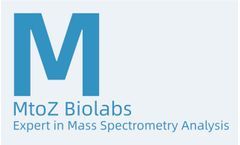Disease Model Development Articles & Analysis
78 articles found
The development of recombinant MGP protein has enabled researchers to study the molecular mechanisms of calcification control and evaluate therapeutic interventions in a variety of disease contexts. ...
Tissue cross-reactivity studies play an essential role in the understanding of immune responses, particularly in the context of autoimmunity, transplant rejection, and vaccine development. These studies aim to identify whether antibodies or T cells generated against a particular antigen react with similar proteins found in different tissues, which can lead to unintended effects and complications. ...
Histological image analysis has emerged as a pivotal domain in biomedical research and clinical diagnostics, allowing scientists and healthcare professionals to decipher the intricate structures of tissues at a microscopic level. This analysis encompasses the examination of biological tissues to understand their composition, organization, and pathology, which can be crucial for diagnosing ...
They regulate inflammation, immunity, and hematopoiesis, making them essential for understanding various biological processes and disease mechanisms. For researchers working with rabbit models, the ability to accurately measure cytokine levels is vital. ...
The cell cycle is an essential biological process that enables cells to grow, duplicate their DNA, and divide into daughter cells. This cycle is carefully regulated by proteins to ensure accuracy in cell replication. Disruptions in these controls can lead to uncontrolled cell division, a hallmark of cancer and other diseases. Cell cycle progression is orchestrated by key proteins, including ...
Various preclinical models have been developed to mimic the multifaceted nature of NAFLD. ...
To advance our understanding of this disease and improve treatment strategies, researchers heavily rely on colorectal cancer cell lines. ...
Nuclear receptors are a class of proteins that play a vital role in cellular communication, gene expression, and overall homeostasis within the body. They act as transcription factors, responding to various stimuli, including hormones, nutrients, and even environmental agents. Due to their crucial roles in physiological and pathological processes, nuclear receptors have emerged as significant ...
Knockin cell line generation represents a pivotal advancement in genetic engineering, providing vital tools for biological research and therapeutic development. This process involves the integration of specific DNA sequences into precise loci within the genome, allowing scientists to explore gene function, model diseases, and ...
As we step into 2024, the global health landscape is increasingly focused on combatting viral infections, which continue to pose significant threats to public health. The COVID-19 pandemic has illuminated the critical need for innovative strategies in antiviral research, and scientists worldwide are embarking on groundbreaking projects to develop more effective therapies, vaccines, and preventive ...
Introduction Microarray printing technology has revolutionized the field of genomics and proteomics, and its application in glycobiology is no exception. Glycobiology, the study of carbohydrates and their biological functions, relies heavily on the ability to analyze large-scale carbohydrate interactions. Microarray printing in glycobiology enables the precise and high-throughput analysis of ...
Glycosylation site detection refers to identifying the location where glycosylation occurs in biomolecules. Glycosylation is a biochemical modification process that involves linking sugar molecules to other biomolecules (such as proteins, nucleic acids, or lipids), thereby affecting their structure and function. Glycosylation plays a critical role in organisms, but it may also be associated with ...
When we talk about antibody sequencing, we often think of issues related to disease treatment and improving human health. Nanobody sequencing provides us with a more precise and efficient solution. Nanobodies, also known as single-domain antibodies, are antibodies composed of a single functional domain. They have the advantages of small size, high stability, and good penetration, and therefore ...
The exact cause of breast cancer is not completely understood, but factors such as genetics, hormone situations, and lifestyle choices can increase the threat of developing the disease. Common symptoms of breast cancer include a lump or mass in the breast, changes in the size or shape of the breast, and nipple discharge. ...
Post-translational modifications (PTMs) of histones are crucial for protein structure regulation, playing key roles in gene expression regulation, DNA repair, cell signaling, and more. These PTMs of histones can be achieved by adding or removing different chemical groups or proteins, thus affecting chromatin structure and function. Here are some common types of histone PTMs. 1. Acetylation The ...
These drugs are usually designed to interact with specific targets (such as enzymes, receptors, and ion channels), and modify their activities to treat or prevent diseases. Developing effective small-molecule anti-cancer drugs is viewed as a promising approach to fight against cancer. ...
Imagine a world where diseases like cancer, Alzheimer's, and Parkinson's could be diagnosed and treated at the molecular level, long before symptoms even appear. This is the promise of fluorescent biopolymers, a revolutionary new class of materials that could transform the field of biomedical research. What Are Fluorescent Biopolymers? At their core, biopolymers are simply long chains of ...
ByMatexcel
Lipids are the basic substances that make up biological membranes. Through lipid-lipid interactions and interactions between lipids and other biomolecules, a complex network of lipid metabolism is formed, which is involved in a large number of life activities. By studying lipid extracts, information about the lipidome can be obtained. Lipidomics studies lipids in organisms at a systematic level, ...
Therefore, diagnostic development for rare diseases is needed, aiming to provide fast and reliable strategies for disease identification and detection. ...
Introduction The human body is a complex network of genes and proteins, each playing a crucial role in maintaining our health. One such gene, DNM1L, has garnered significant attention in recent years due to its vital functions and its association with various diseases. In this blog post, we will delve into the world of DNM1L, exploring its function, the diseases it is linked to, and the ...












